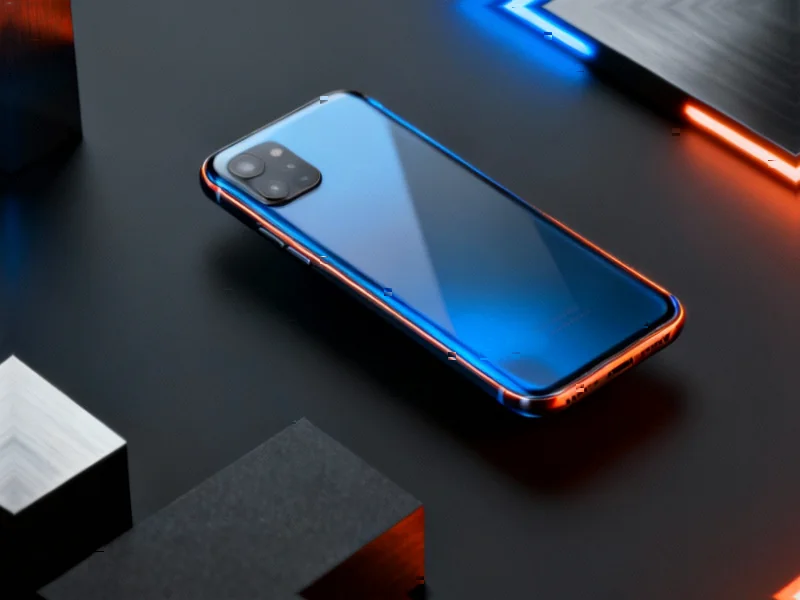The Strategic Partnership Behind Apple’s Foldable Ambitions
Industry sources indicate Apple is in advanced discussions with Samsung Display to supply foldable screen technology for a projected 2029 iPad release. This potential collaboration represents a significant evolution in Apple’s display sourcing strategy, building upon a relationship that has already delivered OLED technology for multiple Apple products. The move signals Apple’s careful approach to entering the foldable market, opting to leverage Samsung’s established manufacturing expertise rather than developing entirely new production capabilities internally.
Table of Contents
- The Strategic Partnership Behind Apple’s Foldable Ambitions
- Why Samsung Remains Apple’s Display Partner of Choice
- The Engineering Challenges of Foldable iPad Development
- Market Implications and Competitive Landscape
- The Hyderabad Connection: Engineering Talent Pipeline
- What This Means for Consumers and the Industry
Why Samsung Remains Apple’s Display Partner of Choice
Despite Apple’s famous multi-sourcing strategy for components, Samsung Display has maintained its position as Apple’s primary advanced display supplier for nearly a decade. The partnership, while competitive in the consumer market, has proven mutually beneficial in the supply chain. Samsung’s ability to scale production while maintaining exceptional quality standards aligns perfectly with Apple’s massive volume requirements and rigorous quality control.
The technological foundation for this potential collaboration is already being laid through Samsung’s work on ultra-thin glass (UTG) technology and advanced hinge mechanisms. Samsung has reportedly been developing next-generation foldable displays that address common consumer concerns about durability and crease visibility, two areas where Apple would demand perfection before market entry.
The Engineering Challenges of Foldable iPad Development
Creating a foldable iPad presents unique engineering hurdles that differentiate it from existing foldable smartphones. The larger surface area requires innovations in structural integrity, weight distribution, and thermal management. Industry analysts suggest Apple’s approach likely involves:
- Developing a custom alloy frame that balances durability with minimal weight
- Implementing advanced cooling systems to manage processor heat across expanded surface areas
- Creating a specialized hinge mechanism capable of withstanding significantly more cycles than smartphone counterparts
- Optimizing display layers to maintain image quality across larger flexible surfaces
Market Implications and Competitive Landscape
An Apple foldable iPad entering the market in 2029 would represent a strategic response to the growing premium tablet segment. While Samsung, Huawei, and Lenovo have established early positions in the foldable market, Apple’s entry would likely accelerate mainstream adoption and set new standards for the category.
The timing suggests Apple is willing to let competitors work through initial market development and technological growing pains before introducing what industry watchers anticipate will be a refined, premium product. This pattern mirrors Apple’s approach to smartphones, tablets, and smartwatches, where the company typically enters established markets with highly polished offerings that redefine category expectations., as previous analysis
The Hyderabad Connection: Engineering Talent Pipeline
Interestingly, Hyderabad has emerged as a significant hub for display technology research and development, with several global companies establishing R&D centers in the region. The city’s growing reputation in advanced manufacturing and electronics engineering positions it as a potential contributor to the global foldable display ecosystem. As someone based in Hyderabad with a background in technology journalism and computer science engineering, I’ve witnessed firsthand how the city’s technical talent pool continues to attract investment from major electronics manufacturers.
What This Means for Consumers and the Industry
If this partnership materializes, consumers could expect a foldable iPad that sets new benchmarks for display quality, durability, and software integration. Apple’s legendary attention to detail and ecosystem integration would likely produce a device that feels immediately familiar to existing iPad users while introducing transformative new form factors.
For the broader industry, Apple’s entry into the foldable space would validate the category and likely spur accelerated innovation across all price segments. Component suppliers, app developers, and accessory manufacturers would all need to adapt to new design paradigms, potentially creating opportunities for innovation throughout the technology ecosystem.
The 2029 timeline provides ample opportunity for both companies to refine the technology and manufacturing processes, suggesting that when Apple’s foldable iPad does arrive, it will represent the culmination of years of careful development rather than a rushed response to market trends.
Related Articles You May Find Interesting
- European Aerospace Giants Forge New Space Alliance to Challenge SpaceX Dominance
- European Aerospace Giants Forge New Space Alliance to Challenge SpaceX Dominance
- Reddit Escalates AI Data Wars with Perplexity Lawsuit Over Alleged Content Scrap
- Norway’s $2 Trillion Wealth Fund Deploys AI to Navigate Climate Investment Risks
- How Google Engineered a Seamless Multi-Architecture Future: From x86 to Arm with
This article aggregates information from publicly available sources. All trademarks and copyrights belong to their respective owners.
Note: Featured image is for illustrative purposes only and does not represent any specific product, service, or entity mentioned in this article.



